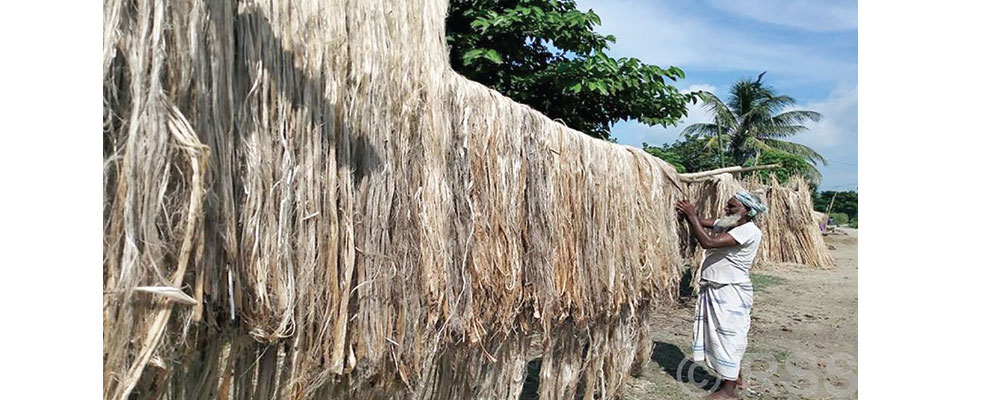- Saturday, 15 February 2025
Farmers rue over low price of jute
By Our Correspondent,Urlabari, Sept. 6: Farmers are suffering a lot due to lack of modern technology in jute farming. The area of jute cultivation has been increasing for the last five years in Morang, but the production is not very satisfactory.
Farmers said that the price of jute skyrockets every year after the farmers sell it. Bishweshwar Singh of Sunawarshi Municipality-8, Morang, said, “Farmers are compelled to sell jute at even less price to manage money for the festival. When farmers sell jute, prices increase.”
Another farmer Mohammad Akram, said that farmers are facing huge economic losses due to inability to store jute.According to him, jute was sold for Rs. 3,500 per 40 kg last year.
After finishing with the farmer, it was sold at a rate of Rs. 4,600 per 40 kg last year.
The farmers of southern Morang were attracted to jute cultivation due to the hope of higher prices.
According to chief of Agricultural Knowledge Centre, Morang Ramdev Singh, jute farming has been cultivated in 5,110 hectares of land in Morang in the last fiscal year 2022/23. It was cultivated in an area of 5,070 hectares in fiscal year 2021/22.
Around 7,700 tonnes of jute was produced in the previous fiscal year. Even with the increased area of jute cultivation, it seems that the production will not increase significantly this year compared to last year.
According to Singh, jute had been cultivated in only 1,200 hectares in Morang in the fiscal year 2018/19.
Under the Jute Cultivation Promotion Programme, the government gave a subsidy to 30 farmers involved in jute cultivation at the rate of Rs. 20,000 to each farmer.
Although the interest in farming has increased, as the technology of making jute is traditional, there is a lot of investment in jute farming.
The demand for jute has increased with the increase in the number of old jute industries coming into operation. However, farmers are not in a position to wait for the price rise as the government has not given subsidies on fertilisers and seeds except for digging the pit.
Sitaram Sahani, another farmer of Sunawarshi Municipality-8, said, “There is a shortage of firewood, so the farmers have cultivated jute in 5 to 6 katthas for stalks.”
Sahani said that if the government gives subsidies on fertilisers and seeds, the farmers of Morang can export jute by fulfilling the national demand.
Shyam Kumar Mandal of Sunawarshi Municipality-1 said that he sold 1,200 kg of jute in the last fiscal year.
He said, “I invested Rs. 35,000 for jute cultivation in 10 kathas of land last year. But I had to sell it for Rs. 3,600 per 40 kg. When there is a lack of money, the farmers have to sell it to manage expenses. When jute reaches the trader’s store, the price goes down to Rs. 900 per 40 kg.”
He complained that he lost Rs. 21,000 because he could not store it for 21 days.
Farmers said that this cultivation is more difficult than other cultivations as the technologies of cultivating jute are traditional.
According to jute farmers, it usually costs Rs. 18,000 to Rs. 20,000 to cultivate jute in 10 kathas.
Laxman Paswan of Sunawarshi Municipality-8 said, “If the farmer sells jute for Rs. 4,000 per 40 kg, the farmer will not suffer any loss.”
Ramdev Singh, chief of Agricultural Knowledge Centre, contact office, Biratnagar, said that even though the Jute Research Office introduced new technology, it was not successful.
















